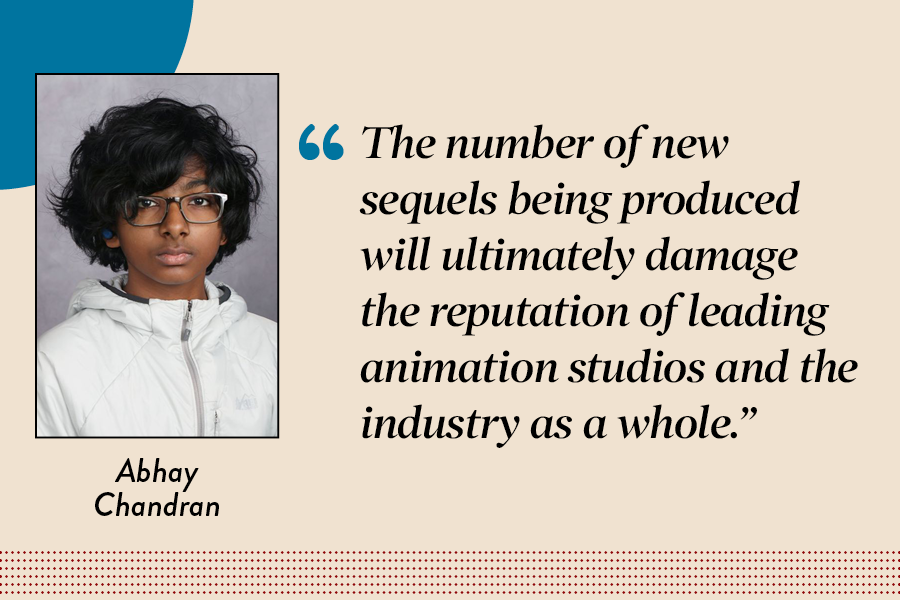Sequels have always been a staple of the animation industry, but according to announcements from Disney’s CEO and a Dreamworks social media account, the next few years will see an influx of animated sequels, including “Toy Story 5,” “Moana 2,” “Shrek 5” and many more sequels announced.
This sudden increase in the number of sequels being produced will ultimately damage the reputation of the leading animation studios and the reputation of the animation industry as a whole.
Sequels have historically been some of the highest-grossing films in animation history. Movies like “Inside Out 2” and “The Incredibles 2” made over $1 billion worldwide. But the nostalgia these films profit from can cause studios just as much harm as success.
When “Ralph Breaks the Internet” was released in 2018, it seemed like a blatant cash grab. This was because the movie boiled down to the same character, Wreck-it Ralph, going through the same character development, learning to overcome his desire to be appreciated. The only difference was the location of the story.
When “Megamind vs. The Doom Syndicate” was released earlier this year, the animation looked cheaper, the cast was changed entirely, the story hinged on a backstory that contradicted the first movie, characters were reduced to single elements, and the original movie’s witty humor was removed. This resulted in a movie so different from the original that it could hardly be considered a sequel.
By definition, sequels must take stories that have reached their natural conclusion and force them to continue. On the other hand, viewers have fewer expectations for a new movie. If a studio wants to tell a similar story in a new way, an entirely new movie can explore aspects of that story without being tied down to a set of characters who have already gone through development. If a studio wants to tell a unique story, a new movie is able to explore that story through characters and art styles fit for that unique story. A new movie has the ability to gain as much profit but risks disappointing the audience, ultimately resulting in a case of high risk high return.
An individual sequel risks momentarily damaging a studio’s credibility in a way that a new story does not. New stories allow studios to expand into new directions, while sequels force studios to remain within the same slim margins in every film, never growing and possibly disappointing. Rather than continue making more sequels, animators should focus on telling new stories and expanding the horizons of the animation industry.





















































